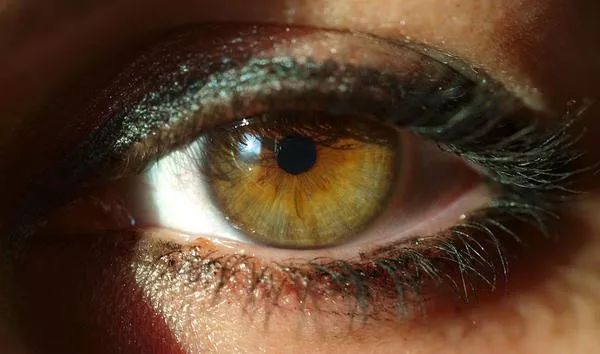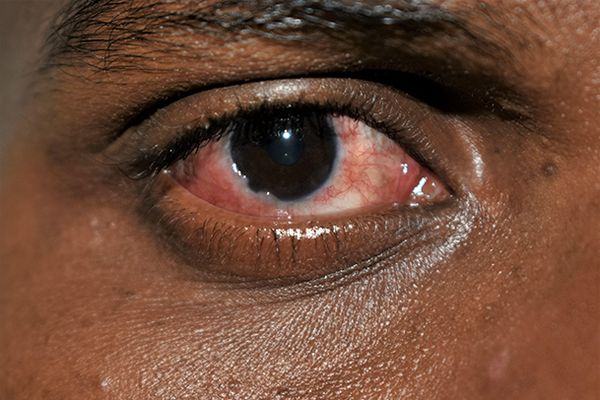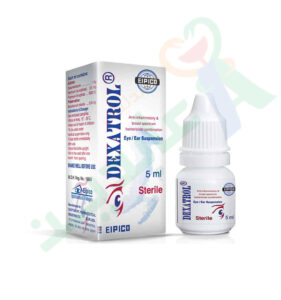Contact us for the best eye drops for conjunctivitis and all your eye needs: 0235535960
Welcome to our comprehensive guide on finding the best eye drops for conjunctivitis. Conjunctivitis, commonly known as pink eye, can cause discomfort and irritation.
In this article, we’ll explore the top eye drops available, factors to consider, and tips for effective relief and treatment.
Table of Contents
Introduction to Conjunctivitis
Conjunctivitis, also referred to as pink eye, is a common eye condition characterized by inflammation of the conjunctiva, the thin layer of tissue covering the white part of the eye and lining the inner surface of the eyelids.
It can be caused by viruses, bacteria, allergens, or other irritants. Symptoms may include redness, itchiness, tearing, and discharge. Conjunctivitis can be highly contagious, particularly in cases caused by viruses or bacteria, making prompt treatment essential to prevent spread.
While viral conjunctivitis often resolves on its own within a few days, bacterial conjunctivitis may require antibiotic eye drops for treatment. Allergic conjunctivitis, triggered by allergens such as pollen or pet dander, can be managed with antihistamine eye drops.
Understanding the cause of conjunctivitis is crucial in selecting the most appropriate treatment, including the use of effective and safe eye drops for relief.
Importance of Using the Best Eye Drops for Conjunctivitis

Conjunctivitis, whether viral, bacterial, or allergic in nature, can cause significant discomfort and affect daily activities. The use of eye drops plays a crucial role in managing symptoms and promoting healing.
Eye drops provide targeted relief by delivering medication directly to the affected area, reducing inflammation, and alleviating symptoms such as redness, itchiness, and discomfort.
Moreover, eye drops help flush out irritants and allergens from the eye, promoting faster recovery and preventing complications.
Using eye drops promptly and consistently can also help prevent the spread of contagious forms of conjunctivitis, such as viral and bacterial conjunctivitis.
By adhering to proper hygiene practices and following the recommendations of healthcare professionals, individuals can effectively manage conjunctivitis and minimize its impact on their daily lives.
Choosing the right eye drops tailored to the specific cause of conjunctivitis is essential for optimal treatment outcomes.
Factors to Consider When Choosing Eye Drops for Conjunctivitis
When selecting eye drops for conjunctivitis, several key factors should be taken into account to ensure effective and safe treatment:
- Types of Conjunctivitis: Identify the cause of conjunctivitis, whether it is viral, bacterial, or allergic in nature, as this will influence the choice of eye drops.
- Ingredients and Formulations: Look for eye drops containing active ingredients such as antiviral or antibacterial agents for viral or bacterial conjunctivitis, and antihistamines or mast cell stabilizers for allergic conjunctivitis.
- Allergy Considerations: Individuals with allergies or sensitivities should opt for preservative-free eye drops to minimize the risk of adverse reactions.
- Safety and Effectiveness: Ensure that the selected eye drops are clinically proven to be safe and effective for the intended use, and consult a healthcare professional if unsure.
By carefully considering these factors, individuals can make informed decisions when choosing eye drops for conjunctivitis, maximizing the chances of successful treatment and symptom relief.
Exploring the Best Eye Drops for Conjunctivitis

When it comes to managing conjunctivitis, several top-quality eye drops have proven effective in providing relief and promoting healing. Here’s an overview of some leading brands and products:
- Visine-A: Known for its ability to relieve redness and irritation, Visine-A combines antihistamine and decongestant properties to provide fast-acting relief from allergic conjunctivitis symptoms.
- Refresh Tears: Ideal for soothing dry and irritated eyes, Refresh Tears lubricating eye drops offer long-lasting moisture and comfort, making them suitable for individuals with mild to moderate conjunctivitis symptoms.
- Bausch + Lomb Opcon-A: Specifically formulated for allergic conjunctivitis, Opcon-A eye drops contain both antihistamine and decongestant ingredients to alleviate itching, redness, and swelling caused by allergens.
- Neosporin Ophthalmic Solution: Recommended for bacterial conjunctivitis, Neosporin eye drops contain antibiotics to combat bacterial infections and reduce inflammation, helping to clear up symptoms quickly and effectively.
- Zaditor Antihistamine Eye Drops: Zaditor eye drops offer targeted relief for allergic conjunctivitis by blocking the release of histamines, reducing itching, redness, and swelling associated with allergic reactions.
Before choosing an eye drop for conjunctivitis, it’s essential to consult with a healthcare professional like us to determine the underlying cause of the condition and identify the most appropriate treatment option.
By selecting the right eye drops based on individual needs and symptoms, individuals can effectively manage conjunctivitis and experience relief from discomfort and irritation.
Tips for Using Eye Drops Effectively
Proper application of eye drops is essential for maximizing their effectiveness and ensuring optimal relief from conjunctivitis symptoms. Here are some valuable tips for using eye drops effectively:
- Wash Hands Thoroughly: Before applying eye drops, wash your hands thoroughly with soap and water to prevent contamination and reduce the risk of introducing bacteria or other irritants into the eye.
- Tilt Head Back: Tilt your head backward or lie down flat on your back to create a comfortable position for administering the eye drops. This helps prevent the drops from dripping out of the eye.
- Pull Lower Eyelid Down: Gently pull down the lower eyelid with clean fingers to create a small pocket for instilling the eye drops. Avoid touching the tip of the dropper to the eye or eyelid to prevent contamination.
- Administer Correct Dosage: Instill the prescribed number of drops into the lower eyelid pocket as directed by your healthcare provider. Avoid blinking excessively immediately after administering the drops to ensure proper distribution.
- Close Eyes Gently: After instilling the eye drops, close your eyes gently for a few moments to allow the medication to spread evenly over the surface of the eye. Avoid rubbing the eyes, as this can cause irritation and disperse the medication.
- Wait Between Applications: If multiple eye drops are prescribed or recommended, wait at least 5-10 minutes between applications to allow each drop to be absorbed properly and prevent dilution or interaction between medications.
- Store Eye Drops Properly: Store eye drops according to the manufacturer’s instructions, away from direct sunlight and extreme temperatures, to maintain their efficacy and prevent contamination.
By following these tips for using eye drops effectively, individuals can ensure proper administration and maximize the benefits of treatment for conjunctivitis, leading to faster relief and improved overall eye health.
Also read: Treatment of Apollo Eye Disease: The Definitive Guide!
Addressing Common Concerns and FAQs

Navigating the treatment of conjunctivitis with eye drops may raise questions and concerns among individuals seeking relief. Here are some common concerns addressed along with frequently asked questions:
- Side Effects and Precautions: While eye drops are generally safe, some individuals may experience mild side effects such as temporary stinging or irritation. It’s essential to follow dosage instructions carefully and avoid sharing eye drops to prevent cross-contamination.
- Compatibility with Contact Lenses: Individuals wearing contact lenses should consult their eye care professional before using eye drops, as certain formulations may contain preservatives or ingredients that can damage or discolor contact lenses. In some cases, contact lenses may need to be temporarily removed during treatment.
- Consultation with Healthcare Providers: Individuals with underlying medical conditions or concerns about their eye health should consult a healthcare provider before using eye drops for conjunctivitis. A healthcare professional can provide personalized recommendations and address any specific concerns or questions.
- Duration of Treatment: The duration of treatment with eye drops for conjunctivitis may vary depending on the underlying cause and severity of symptoms. It’s essential to complete the full course of treatment as prescribed by a healthcare provider to ensure effective resolution of symptoms and prevent recurrence.
By addressing common concerns and providing answers to frequently asked questions, individuals can make informed decisions about using eye drops for conjunctivitis treatment, ensuring safe and effective relief from symptoms while promoting overall eye health and well-being.
Conclusion: Choosing the Best Eye Drops for Conjunctivitis
In conclusion, selecting the best eye drops for conjunctivitis is essential for effective symptom relief and promoting healing.
By considering factors such as the type of conjunctivitis, ingredients and formulations, and individual preferences and needs, individuals can make informed choices to address their specific symptoms and concerns.
Whether it’s viral, bacterial, or allergic conjunctivitis, there are numerous options available, ranging from antiviral and antibiotic eye drops to antihistamine formulations.
Consulting with a healthcare professional is paramount to ensure the chosen eye drops are safe, effective, and compatible with individual health conditions and medications.
With proper application techniques and adherence to treatment regimens, individuals can experience relief from conjunctivitis symptoms and regain comfort and clarity in their vision.
Remember to follow recommended hygiene practices, avoid sharing eye drops, and seek medical attention if symptoms persist or worsen. By prioritizing eye health and selecting the right eye drops, individuals can take proactive steps toward optimal eye care and well-being.
Call for the Best Eye Drops for Conjunctivitis and other eye treatment services now: +233235535960






